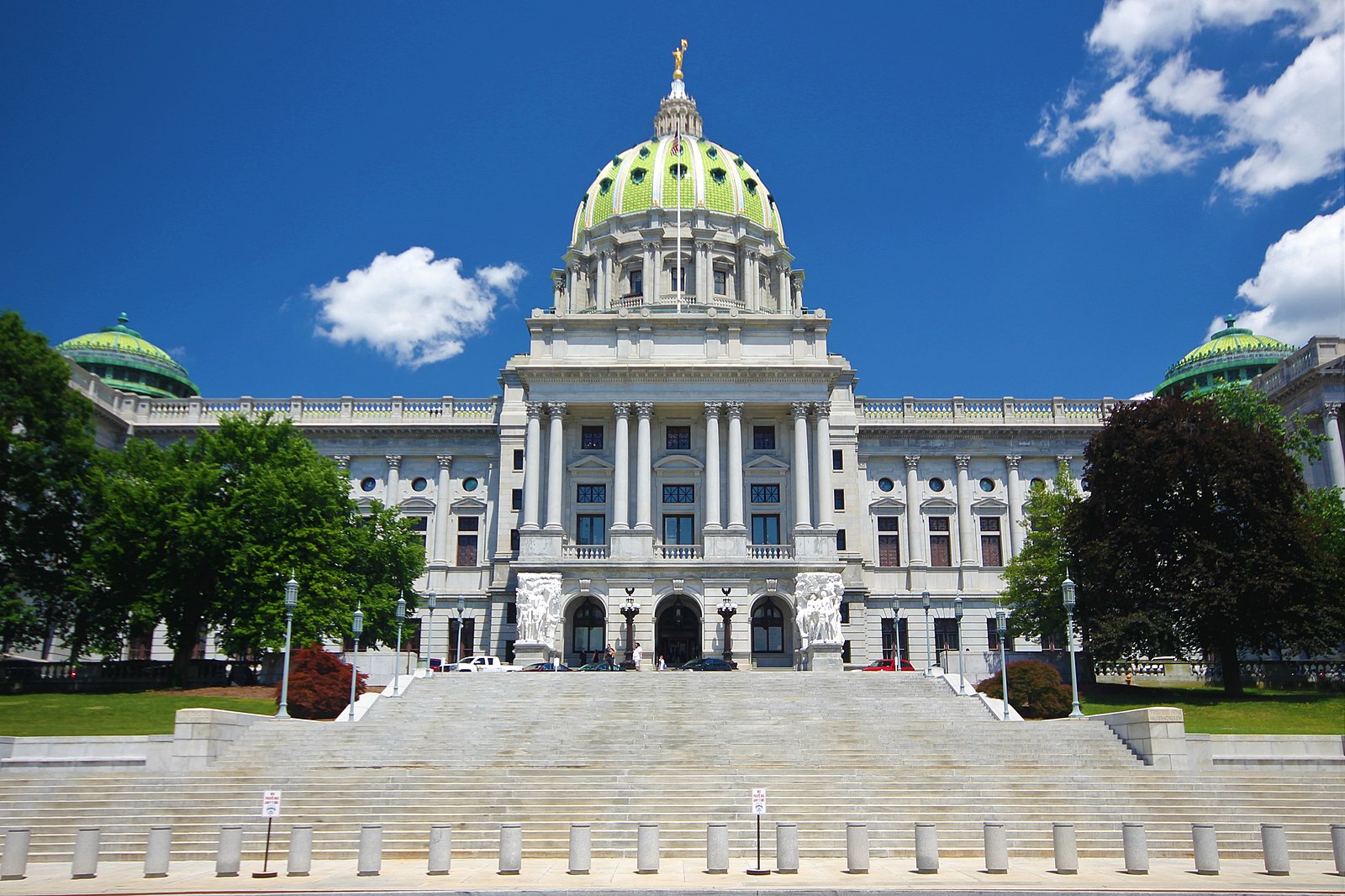Election Administration Challenges in Pennsylvania
Pennsylvania saw a dramatic increase in vote-by-mail and absentee ballots in its June primary. What lessons can be drawn for the November presidential election?

Published by The Lawfare Institute
in Cooperation With

Lawfare is partnering with the Stanford-MIT Healthy Elections Project to produce a series on election integrity in the midst of the coronavirus crisis. The Healthy Elections Project aims to assist election officials and the public as the nation confronts the challenges that the coronavirus pandemic poses for election administration. Through student-driven research, tool development, and direct services to jurisdictions, the project focuses on confronting the logistical challenges faced by states as they make rapid transitions to mail balloting and the creation of safe polling places. Read other installments in the series here.
As voters in Pennsylvania prepared to cast their ballots in the presidential primary election on June 2, they were dealing not only with the challenges of living through the coronavirus pandemic—for which the state had already delayed its primary by five weeks—but also with a nationwide movement against police violence and protests that led to a citywide curfew and public transit shutdown in Philadelphia’s city center.
Despite these factors weighing on Pennsylvania’s election, voter turnout and vote method followed similar trends to other states that held primaries before and after June 2. Overall turnout was lower in Pennsylvania than it had been in the 2016 primary, but Democratic turnout was higher this year, and both parties saw large shifts to voting by mail. In Pennsylvania, unlike in Florida, Democrats were more likely than Republicans to vote by mail—potentially reflecting increasingly partisan rhetoric around mail voting.
Findings from a Healthy Elections poll of 1,000 Pennsylvanians, taken shortly after their primary, may be useful in understanding what the November presidential election might look like. A quarter of respondents did not express confidence in Pennsylvania’s coronavirus preparation, a factor that may come into play as Pennsylvanians decide whether to vote by mail or to not vote at all. However, nearly all the voters surveyed (91 percent) said they did intend to vote come November, though they are split on their vote method: 49 percent stated that it was unlikely or very unlikely they would vote absentee in the presidential election and 51 percent said it was likely or very likely that they would.
A Word About Data
This post uses administrative data from the Pennsylvania Department of State to analyze voter turnout, mail balloting and registration in recent primary elections. Pennsylvania maintains a voter file of all registered voters in the state, which records each registrant’s voting history in prior elections and their method of voting—at polls, absentee or by mail. In practice, there is little to distinguish absentee voting from mail voting in Pennsylvania. Prior to 2020, Pennsylvania voters could either vote on Election Day or request an absentee ballot if they satisfied one of a group of restrictive conditions. In October 2019, however, Governor Tom Wolf signed Act 77 into law, which allowed all those eligible to vote to request a mail ballot without an excuse. However, the law did not abolish the more traditional absentee law. As a consequence, under Pennsylvania law, voters can now cast ballots via mail, “at the polls” on Election Day or through the traditional absentee mode.
The data also includes each voter’s age, sex and partisan affiliation. Race is not recorded in the voter file but can be inferred using Bayesian Improved Surname Geocoding (“BISG”) imputation. This process uses surname and geocoded addresses to assign probabilities of a voter belonging to a racial group. These demographic characteristics allow us to make more detailed analyses related to age, sex, party and race, in addition to our overall analyses of turnout, vote method and registration.
Immediately after the primary, the Healthy Elections Project administered questions from the Survey of the Performance of American Elections to 1,000 registered voters in Pennsylvania to gauge their experience in voting during the election and to understand why some eligible voters did not vote. The results of this survey were also included in this Healthy Elections analysis.
Turnout
Overall, turnout was lower in the 2020 presidential primary than in the 2016 primary by around 200,000 voters. However, Democratic turnout increased by 5 percent from 1.56 million voters in 2016 to 1.64 million voters in 2020. Republican turnout decreased by 19 percent from 1.46 million voters to 1.17 million between 2016 and 2020. The lower Republican turnout was expected given that President Trump ran unopposed in his 2020 primary.
As in Ohio and other states, older voters made up a greater proportion of voters in 2020. The share of voters age 60 or older increased from 42.9 percent in 2016 to 49.6 percent in 2020. And whereas 39 percent of those who voted in the 2016 Pennsylvania primary were women, in 2020 that statistic increased to 42 percent.
Turnout in the 2020 Pennsylvania primary election decreased from 2016 for white, Black, and Hispanic voters, while turnout of Asian voters increased by 2 percent. White turnout decreased the most, by 9 percent, from 2.47 million in 2016 to 2.24 million in 2020. Meanwhile, Black turnout decreased the least—from 317,787 in 2016 to 313,103 in 2020—a 1 percent drop.
Vote Mode
Pennsylvanians have multiple methods of voting available to them, including in person at polling places on Election Day, and by mail-in and absentee voting. In-person voting on the day of the primary election declined greatly between 2016 and 2020 in favor of mail-in and absentee voting, likely due at least in part to coronavirus-related fears of in-person contact. Only 49 percent of voters in the 2020 primary voted in person on Election Day, compared to 98 percent in 2016. Instead, 51 percent of voters in 2020 relied on mail (43 percent) and absentee (8 percent) ballots. Democrats particularly relied on mail/absentee voting—63 percent of Democratic voters used mail-in or absentee ballots, compared to only 33 percent of Republican voters.
Older voters were more likely than younger voters to vote by mail in 2020, regardless of party affiliation. However, younger Democrats were more likely to vote by mail than their Republican counterparts. Around 47 percent of 18-year-old Democrats who voted in the 2020 primary did so by mail, compared to only 17 percent of 18-year-old Republicans who voted.
Consistent with overall findings on vote method choices, analyses by race reveal that Election Day voting decreased and mail and absentee voting increased in 2020 for all racial groups. Only 44 percent of Black voters chose mail or absentee ballots, however, continuing to rely more on Election Day voting compared to other groups, despite the pandemic. Asian voters were most likely to cast mail or absentee ballots, with 60 percent of Asian voters choosing these vote methods.
Registration
When considering voter registration, we looked at both net registrations each week as well as cumulative registrations from the start of the year. Weekly net voter registration is the total number of registrations made in a particular week, while cumulative registrations show the sum of registrations made from the beginning of the year to the week in question. Both of these figures are informative. Comparing net registrations year over year can reveal whether patterns of registration have shifted, for example, if registrations usually peak before an election but don’t in a particular year. Comparing cumulative figures can be helpful in determining whether, at any given point in the year, registration totals are falling behind other years, regardless of changing patterns.
Due to the coronavirus pandemic, Pennsylvania Governor Tom Wolf delayed the primary and its registration deadline by almost two months. Nevertheless, net voter registration leading up to the 2020 primary trended lower than in the build-up to primaries in 2008 and 2016, when both contested Democratic and Republican primaries were held.
However, net registration rates leading up to the 2020 primary exceeded that of the 2012 primary, a more comparable election year in which only the challenging party had multiple candidates on the primary ballot. Thus, while net registration in 2020 decreased compared to 2008 and 2016, it increased compared to the more commensurable 2012 primary.

This chart shows net registrations by week for 2008, 2012, 2016 and 2020. The first vertical line marks the week of the 2008, 2012, and 2016 primaries, and the second vertical line marks the week of the 2020 primary.
Additionally, in spite of reduced net registration peaks, the cumulative total of new registrants between the new year and the date of the 2020 primary (160,034 new registrants) was higher than respective totals for 2008 (156,349 new registrants) and 2012 (64,077 new registrants), while lagging behind 2016’s total (195,620 new registrants) by around 35,000 voters.
Between the new year and the date of the 2020 Pennsylvania presidential primary, the cumulative registration total for young voters (aged 18-29) was 13 percent higher than it had been at the time of the 2008 primary—from 200,816 to 226,726 registered young voters. This was 150 percent higher than it had been in the 2012 primary, when there were 90,600 registered young voters. Meanwhile, the cumulative number of registered voters over age 60 was 15,026 at the time of the 2020 primary, which was 159 percent higher than it was at the time of the 2012 primary and 38 percent higher than in 2016.

These charts group cumulative registrations by age group. The first vertical line marks the week of the 2008, 2012 and 2016 primaries, and the second vertical line marks the week of the 2020 primary. We compare cumulative registration numbers between the start of the year and their respective primary election weeks rather than between the start of the year and a fixed week across years because registrations usually spike before the primary registration deadline, which falls later in 2020 due to the delayed primary election this year.
Most racial groups had a higher cumulative total of registrants in 2020 than in 2008 and 2012. Black registrants are an exception, with a cumulative registration total in 2020 that was 83 percent higher than the total in 2012—8,585 registered Black voters in 2012 to 15,752 registered Black voters in 2020—but 36 percent lower than the 24,637 cumulative voters registered in 2008. Cumulative totals decreased from 2016 to 2020 for all racial groups. This decline was the smallest for Asian voters, whose cumulative registration totals dropped by only 1 percent between 2016 and 2020.

The charts group cumulative registrations by race, with the first vertical line marking the week of the 2008, 2012 and 2016 primaries, and the second vertical line marking the week of the 2020 primary.
Mail Ballot Rejections
Because the voter file doesn’t include information on mail ballot rejections, the data we relied on for this analysis looked at mail ballot rejections as a proportion of all ballots cast, instead of just those ballots cast by mail. The rejection rate of Democratic mail ballots cast as a proportion of all Democratic ballots cast was 1.7 percent. The rejection rate of Republican mail ballots cast was 0.8 percent. In other words, a slightly greater proportion of Democratic voters’ ballots were rejected than those of Republican voters.
The most common reason for rejection, by far, was that a ballot was returned after the deadline. It is unclear how much of this was due to U.S. Postal Service delays or to voters mailing their ballots late, but the reason is worth noting in light of recent concern regarding the postal service’s capacity to meet an increased need for mail voting this November.
Voter Survey
Comparing the experiences of voters polled after the 2020 primary election to those polled after the 2016 presidential election, the Healthy Elections Project’s analysis of responses to the Survey of the Performance of American Elections found that the majority of voters in both years were able to vote without too many problems once they arrived at their polling places. But in 2020, of course, the percentage of voters surveyed who voted absentee or by mail increased dramatically—from 5 percent in 2016 to 59 percent in 2020—and the most common reason cited by 76 percent of voters for requesting a mail or absentee ballot was anxiety about the coronavirus.
While the great majority of those surveyed in June (91 percent) replied that they intended to vote in November, a quarter of respondents did not express confidence in their state’s coronavirus preparations for voting in the presidential election—which could have implications for how residents actually choose to vote come November.
Conclusion
Pennsylvania’s experience holding elections during the coronavirus pandemic and against the backdrop of protests offers insights into what we may be able to expect from voters this fall and lessons for election officials preparing for November.
As with other states, Pennsylvania saw a dramatic increase in vote-by-mail and absentee ballot use—a shift that will likely persist this fall. Democrats relied more heavily on mail and absentee voting than Republicans did in the Pennsylvania primary, which ran counter to trends from earlier primaries in other states such as Florida (where Republicans voted by mail in their March primary more heavily than did Democrats). It will be interesting to note how this pattern shifts in November, as more Republicans turn out to vote.
Looking ahead to the presidential election, Pennsylvania’s election officials are responding to the lessons of the June 2 primary by investing in technology and more staff to process ballots faster, increasing the number of in-person polling locations and adding drop boxes for mail-in ballots. A federal lawsuit filed by Trump’s reelection campaign challenged the use of drop boxes, but a judge ruled that the federal court would allow state courts to determine their legality.
When polled after the June 2 primary, Pennsylvania voters expressed concerns that the state would be ready for voting in November, given the pandemic. With less than one month to go before the presidential election, opportunities remain for expanding Pennsylvania’s capacity to meet the needs of those voting by mail and in person. Whether these preparations will be sufficient to meet voters’ needs in November remains to be seen.




.jpg?sfvrsn=cb803a66_6)


